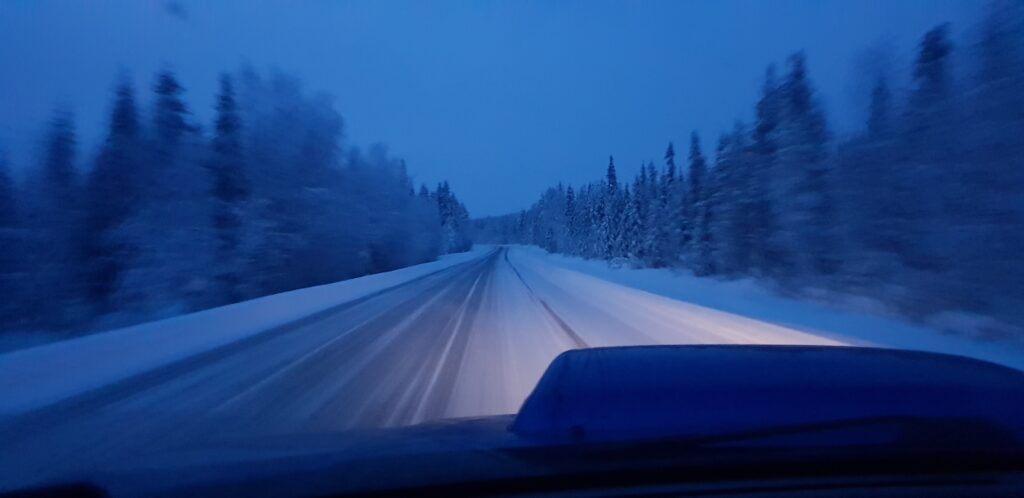Effects of Road and Weather Conditions
Wet Weather
Visibility can be made worse because at higher speeds vehicles, especially large ones, throw up more spray.
- Use lead lights to help other drivers see you. Don’t use rear fog lights unless visibility is less than 100 metres.
- Always reduce your speed when conditions are poor. Driving is safer at lower speeds.
- Adjust your speed to suit the conditions and leave larger separation distances, at least double the normal.

Ice or Frost
Best advice, don’t drive unless absolutely necessary.
The presence of ice or frost can seriously affect four handling of the vehicle. Try to anticipate the road surface conditions. If your steering is light, it is an indication that there may be frost or ice. A very gentle touch of your brakes to see their response could help you judge the road surface conditions.
- Allow up to ten times the distance for braking.
Fog
If there is fog, you must be able to stop within the distance you can see to be clear.
- Use dipped headlights.
- Check your mirrors and slow down, fog impacts both visibility and judgement of speed and distance.
- Check your speedometer and leave plenty of space between your vehicle and the vehicle ahead.
Unfortunately, multiple pile ups are all too common in foggy conditions. They don’t just happen. They are caused by drivers who are:
- Travelling too fast.
- Driving too close to the vehicle in front.
- Assuming there’s nothing in the fog ahead.
- Ignoring the obvious.
Do switch on fog lamps if visibility drops below 100 metres.